Langtang National Park Trekking - Tips | Itinerary | Checklist
Trekking to Langtang National Park | Langtang National Park Trekking
Trekking to Langtang National Park also known as Langtang National Park Trek (or Trekking in Langtang Valley) is known as "Trekking in the Valley of glacier masses." Langtang Valley is a wonderful location where you may witness mesmerizing snow-capped mountains coated in spectacular ice sheets. This valley, dominated by Mount Langtang Lirung (7246 m) and only 19 miles north of Kathmandu. The Langtang Region Trekking trail traverses the Langtang National Park, passing through tropical lush jungle and alpine mountain landscapes. Langtang's spectacular terrain, quaint villages, sacred lakes, and towering mountains provide an unforgettable experience of discovering the Himalayan secret valley. Wandering through Langtang beneath the cover of a naturally painted tapestry of white clouds on a blue sky while taking in 360-degree vistas of pristine pearl mountains is an experience beyond compare. The Langtang Valley Trekking also provides a fortunate opportunity to experience Nepal's breathtaking natural beauty, rich culture, diversified geography, primitive lifestyle, and panoramic panorama. 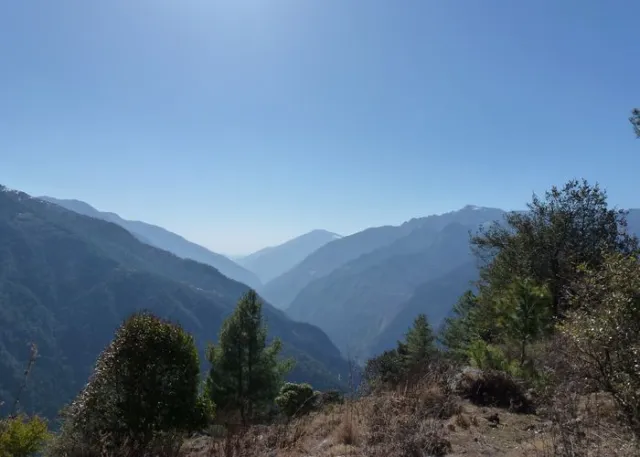 Beautiful view of landscape at Langtang National Park Trekking
Beautiful view of landscape at Langtang National Park Trekking
Because the Langtang region is influenced by Tibetan culture, you will see several historic Buddhist monasteries on this cultural journey. You will also drive through local villages, where you will have the opportunity to mingle with the Tamang people, who are famed for their friendliness. If you choose, you will have the opportunity to climb Kyangjin Ri (4900m) on this trek. This is a non-technical climb that trekkers with no prior climbing experience can complete. You can get 360-degree mountain vistas from the peak. Finally, once we arrive in Kyangjin, we will begin our journey back through the spectacular Langtang valley, until we reach Syabru Besi, where we will board the bus back to Kathmandu.
Highlights of Langtang National Park Trekking
- Scenic Drive from Kathmandu to Syabrubesi viewing the beautiful landscapes.
- Unspoiled National Park of Nepal: Langtang National Park lies between the Nepal-China (Tibet) border.
- Learn more about Tibetan Buddhist culture.
- Experience Extended diversity of flora and fauna.
- Majestic view of snow-capped mountains
- The best place to view: Dorje Lakpa (6,990 m), Langtang -II (7,227 m), and Langtang Lirung (7,200 m), Ganesh Himal(7,429 m), etc
- Enjoy the typical Tamang Village & Community.
- Chance to climb Tsergo-Ri.
- Walking through unimaginable Rhododendron Forest.
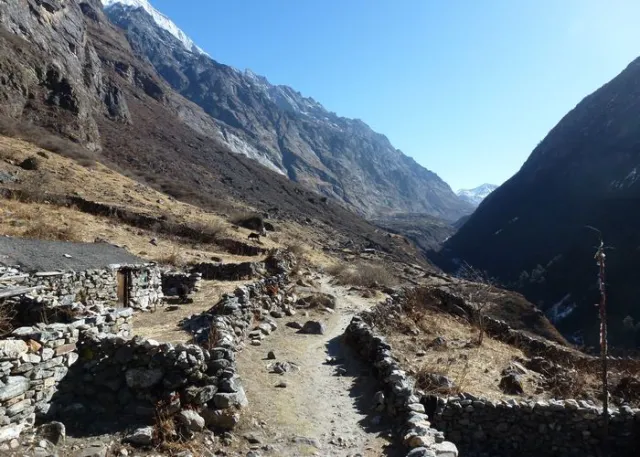 Beautiful view of mountains at Langtang Valley Trekking
Beautiful view of mountains at Langtang Valley Trekking
Tips for Langtang Trek
-
Eat Properly and Stay Hydrated
You will be walking every day while on a hike. To stay alive, you must eat healthy foods and drink at least 3 liters of water each day. You must eat a sufficient amount of protein and carbohydrates. On the trails, you can bring small snacks and protein bars to eat. You may overcome any health difficulties during the hike by eating properly and drinking enough of water.
-
Get proper clothing and gear
Weather is unpredictable at high altitudes. The temperature can quickly drop below freezing point at higher altitudes. The trail may become tough due to the cloud and unexpected rain. As a result, you must pack appropriately in anticipation of changing weather conditions. Regardless of the season, you can wear waterproof/windproof gear. It's also a good idea to have a four-season sleeping bag and trekking poles with you on your walk, regardless of the season.
Starting your walk early in the morning is the best option. This makes your journey more comfortable and allows you to get at your destination sooner. Because the trails are less crowded, you may experience nature in a calm setting. Because the weather in the mountains is unpredictable, the sooner you arrive at your destination, the safer you will be. 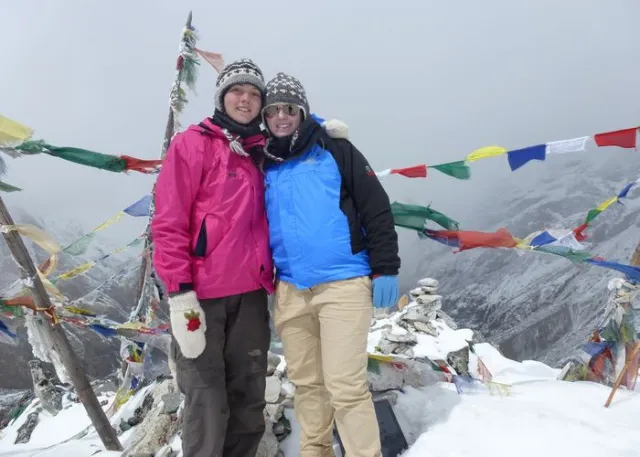 Trekker taking photo at Kyanjin Ri of Langtang Trekking
Trekker taking photo at Kyanjin Ri of Langtang Trekking
One of the most important things to consider while planning for the Langtang National Park trek is travel insurance. This is required of trekkers in order to prevent financial loss due to property damage and loss. For treks beyond 3000 meters, you must purchase Langtang Valley Trekking insurance, which covers lost luggage, flights, and airlifting in the event of a medical emergency. Before arriving in Kathmandu, Nepal, MMT experts recommend purchasing travel insurance in your home country.
-
Hiring a Porter and a Guide
The majority of individuals enjoy hiking or trekking with a guide and porter. A porter assists you in carrying your belongings so that you can hike for longer periods of time at a greater altitude. In general, a guide can assist you in becoming more comfortable in a new environment. Make sure your trip company is registered with the Nepal Tourism Board (NTB) and the Nepal Trekking Agencies' Association (TAAN). Aside from that, you must ensure that your company has a certified guide. MMT is registered trekking company of Nepal providing different treks like Eeverest Base Camp Trek, Annapurna Base Camp Trek, Manaslu trek and Langtang Valley Trek.
The most important component of this guide is the section on trekking equipment. If you're going on a short or long trek, your gear is essential. Backpacking might be challenging at times if you are inexperienced with the local weather conditions. Actually, you do not need to bring all of your trekking equipment from home. In Kathmandu, there are hundreds of trekking shops. The shop usually leases or sells the gear at a modest cost. But carry the essentials from home, such as a hiking footwear, a trekking bag, and so forth. Gloves, jackets, sleeping bags, and other trekking equipment are frequently rented in Kathmandu's trekking shops. MMT provides sleeping bag for the trekkers who booked Langtang National Part Trekking.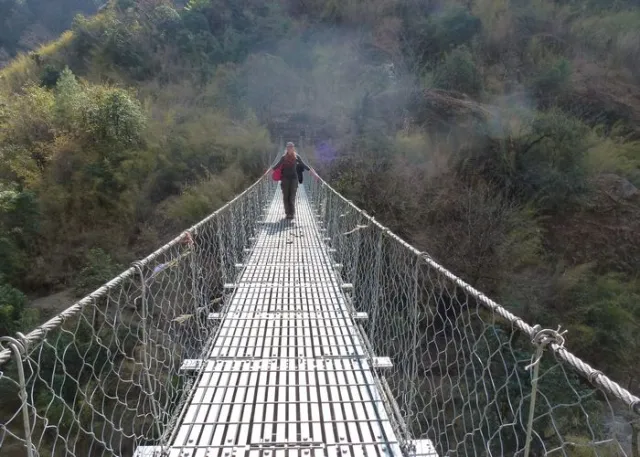 Suspension bridge at Langtang Region Trekking
Suspension bridge at Langtang Region Trekking
Check List for Langtang National Park Trekking
- Reading/writing material
- First-aid kit; should contain lip salve, Aspirin, Band Aids, anti-histamine, Imodium or similar tablets for mild cases of diarrhea
- Re-hydration powder, extra prescription drugs you may be taking if any particular
- Wet wipes for cleaning can be purchased in Kathmandu.
- Health requirements arranged
- Money: cash/credit card
- Down Sleeping bag provided by Mountain Mart Trek in Kathmandu
- Light weight Towel
- Day pack (25-30 liter) to carry your personal needs during the day
- Torch/flashlight - headlamp style is ideal
- Insect repellent, sunscreen and lip balm
- Refillable water bottle - Min 1 Liter Aluminum or Nalgene polypropylene are best
- Warm Hat
- Sunhat/bandana
- Sunglasses
- Gloves - wool or fleeced and gore tex
- Scarf
- Bag Liners to waterproof your bags (A duffel bag is provided to each trekker for trekking by MMT in Kathmandu)
- Sewing Kit
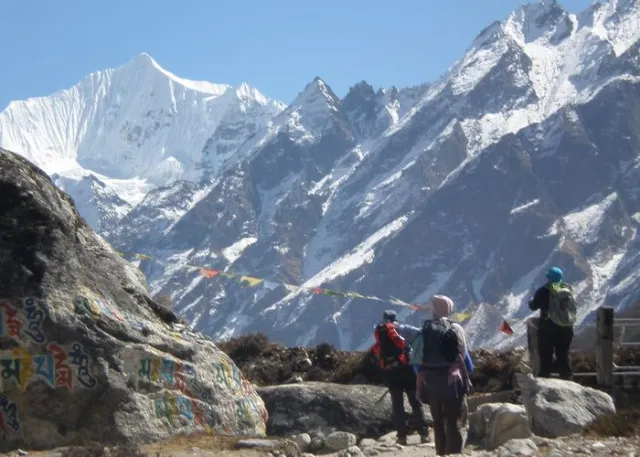 Trekker enjoying beautiful view of snow-capped mountains
Trekker enjoying beautiful view of snow-capped mountains
- Wind and waterproof Jacket & Pants
- Comfortable and sturdy walking shoes (worn frequently prior to departure)
- Socks: thick wool blend and thin cotton to be worn in combination - ensure boots fit such combination
- Running shoes or sandals for evening
- Wool jumper/sweater/fleece. Lightweight during summer, 1 heavyweight or 2 lightweights during winter months.
- T Shirts 2 or 3
- Shirt - Long Sleeved
- Pants - lightweight long trousers (jeans are unsuitable)
- Thermals upper and lower
- Extra warm clothing during winter (December to March) layered clothing - thermals.
Outline Itinerary for Langtang Trekking
- Day 01: Arrival in Kathmandu:
- Day 02: City Excursion and Trek Preparation:
- Day 03: Drive from Kathmandu to Dhunche (1550m/ 5,085ft):
- Day 04: Dhunche to Thulo Syabru (19,00m/ 6,233ft):
- Day 05: Thulo Syabru to Lama Hotel (2,470m):
- Day 06: Lama Hotel to Langtang village (3,430m):
- Day 07: Langtang Village to Kyanjin Gompa (3,830m/ 12,697ft):
- Day 08: Exploration day at Kyanjin Gompa:
- Day 09:Kyajin Gompa to Lama Hotel:
- Day 10: Lama Hotel to Syabrubesi (1,440m/ 4,750ft):
- Day 11: Drive from Syabrubesi to Kathmandu:
- Day 12: Farewell Departure Day:
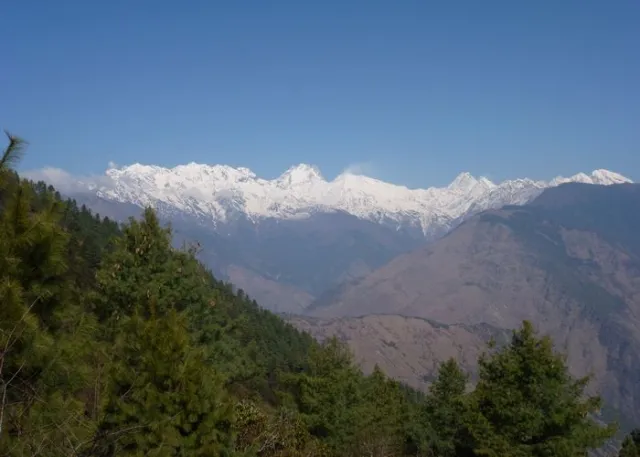 Majestic view of mountains at Trekking of Langtang National Park
Majestic view of mountains at Trekking of Langtang National Park
Difficulty of Langtang National Park Trekking
The Langtang Valley Trip is a strenuous trek. This journey is not as challenging as some of Nepal's other well-known treks, such as the Everest Base Camp Trek, Annapurna Circuit Trek, Manaslu Trek, etc. There are numerous teahouses and hotels along the trail, providing easy access to lodging and food. The hike is relatively easy, and there are no complicated trails. This expedition, however, should not be taken lightly. Despite the fact that you will not be traveling in such high-altitude places like the Everest climb, you may find yourself sitting and facing unknown circumstances.
-
Langtang Trek Route Difficulty
The Trekking to Langtang Valley entails climbing up and down narrow, high mountains along a rocky trail. During the journey, you will travel a distance of 60 to 80 kilometers. This entails walking for 6 to 7 hours every day. The Langtang Valley Trekking begins in the town of Syabrubesi, 1550 meters above sea level. You'll be headed to Lama Hotel from Syabrubesi. The terrain is moderately challenging, with a few steep hills thrown in for good measure. Lama Hotel will take approximately 6 to 7 hours to reach. The walk is primarily uphill after Lama Hotel. This section of the hike might be difficult for beginners. To go to Langtang village, you'll have to trek for 6 to 7 hours straight. The trip continues to Kyanjin Gompa, which is located at 3900 meters. Hiking at such a high altitude can be difficult, but the beauty of nature will make it easier for you. Because the Langtang trip includes steep and slopey ups and downs, certain sections can be rather difficult. As a result, being extremely cautious while walking on such pathways would be beneficial.
-
Physical Fitness Required
The Langtang Trekking is a modest trek that does not require any physical preparation or hiking experience. However, you must be emotionally and physically prepared for any delays or inconveniences along the way. If you want to make your walk go more smoothly, start by exercising before you go. Day treks with some uphill/downhill climbing are possible. It will prepare you for the trekking trail's varied course. 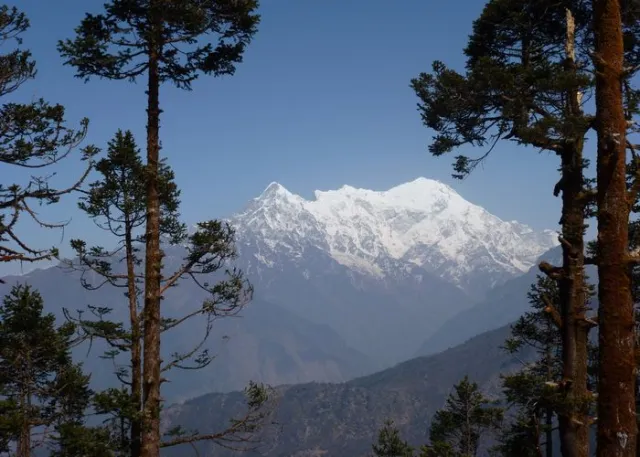 Thrilling view of Mt. Langtang
Thrilling view of Mt. Langtang
The most common challenge that trekkers confront during a high altitude journey is altitude sickness. It can happen to anyone, regardless of their age or physical condition. Although the Langtang trip does not reach the same high altitudes as the Everest climb, altitude sickness can still occur. Then, in order to aid yourself and others, you must be familiar with the signs of altitude sickness. The following are the signs and symptoms of altitude sickness:
- A headache
- Nausea and vomiting
- Shortness of breath
- Dizziness
- Loss of appetite
- Heart rate increment
- Difficulty in sleeping
If you notice any of these signs, don't push yourself any more or convince yourself that you'll be alright. These symptoms will not go away. As a result, inform your group and guide about your medical condition. If you notice any of the symptoms while hiking, take the following precautions:
- Walk back to a lower altitude if possible.
- Do not smoke or drink.
- Take some medicine.
- Drink lots of water. Hydration is the key.
- Do not stress your body or walk until you feel better. You might have to take a rest for the next 48 hours.
Permits Required
Permits are typically required for access and exit as well as permission to hike certain trails. Make sure to get one from Kathmandu's Nepal Tourism Board (NTB). Remember to bring your passport and photos.
• The TIMS Card
A permit is a card called the Trekker's Information Management System (TIMS). These permits must be presented at various checkpoints. The Langtang Trek TIMS Card is a record that aids trekkers in the event of an earthquake, severe weather, or lost trekkers. It cost roughly Rs. 2000 ($20) for independent trekkers and Rs. 1000 ($10) for group trekkers with a guide. If you travel through a travel agency, however, they will handle the TIMS Card for you.
• Langtang National Park Fee
The admission fee to Langtang National Park is approximately Rs 3000 ($30). This permit can be obtained through the Dhunche or the Tourism Board in Kathmandu (Starting point of Langtang Valley Trekking) 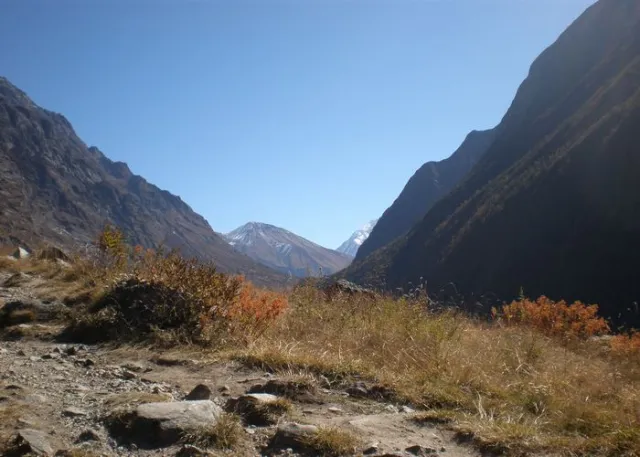 Beautiful view at Langtang National Park
Beautiful view at Langtang National Park
-
Gosainkunda Helambu Trek - 13 days
One of the most popular treks in the Langtang Region is the Gosaikunda – Helambu Trek. The trek provides an opportunity to see undiscovered pathways, unspoiled natural beauty, rich green flora, immaculate landscapes, and a gorgeous landscape. The walk is also unique in that it allows you to see a variety of flora, animals, and endangered wildlife while trekking through Langtang and Shivapuri National Parks. While traveling through the paths and from vistas, the journey also provides spectacular views of the snow-capped mountain ranges and peaks such as Langtang Lirung, Ganesh Himal, Jugal Himal, Annapurna range, Manaslu range, and a few other summits.
-
Langtang Gosainkunda Circuit Trek - 18 days
The Langtang Gosainkunda Circuit trek leads up the Langtang Valley through woods to Kyanjin Gompa. Here you can see how Buddhists live their spiritual lives. The monastery dates back 700 years. A trek to Tserko Ri in the early morning provides spectacular views of the High Himalaya along the Tibetan border, as well as Langtang Lirung and its glaciers.
Tamang Heritage Trek is a newly opened area west of the Langtang Valley that intends to bring tourism money to an impoverished region in exchange for travelers having the opportunity to engage with Tibetans. Trekkers stay in local lodges or homes, experiencing firsthand the Tamang culture's warmth and spirit, as well as its Buddhist beliefs and handicrafts. Your hosts, farmers who supply produce, cultural performances, and artisan sales all benefit, with a portion of the proceeds going to charity. One notable advantage is that Tamang heritage trip Nepal is still "off the beaten track," providing a sight of an area that has been "set back in time," allowing time for introspection and seclusion. 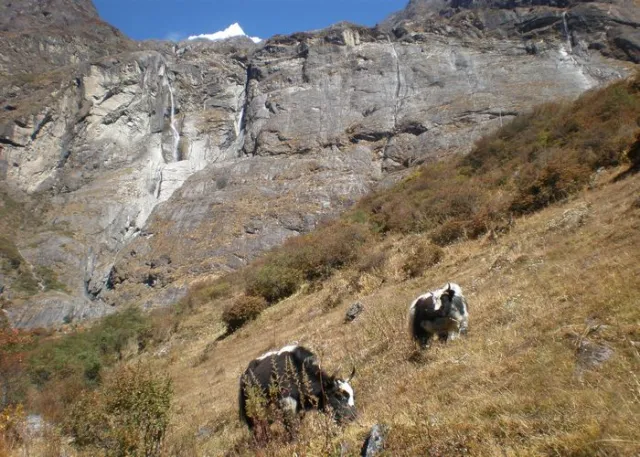 Yak at Langtang National Park
Yak at Langtang National Park
Other Trekking Destinations of Langtang Region
Conclusion
The Langtang National Park Trek (or Langtang Region Trekking) is one of the most difficult and demanding treks in Nepal's Langtang and Helambu regions. The hike is moderate to difficult, and trekkers with ordinary physical fitness may complete it. The walk is enjoyable in any season, but the ideal seasons to go are spring and fall, when you can enjoy the stunning scenery and pure surroundings. The trek is the best in the Langtang region since it allows you to traverse the highest Laurebinayak mountain and explore the region's sacred lakes, notably Gosaikunda Lake. Please contact us for further information; our professionals are always available to assist you. Feel free to contact us if you have any questions about trekking in Nepal.


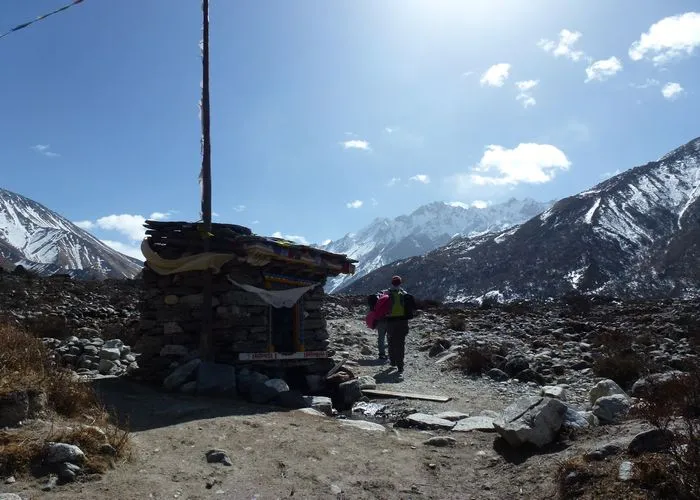
 Beautiful view of landscape at Langtang National Park Trekking
Beautiful view of landscape at Langtang National Park Trekking Beautiful view of mountains at Langtang Valley Trekking
Beautiful view of mountains at Langtang Valley Trekking Trekker taking photo at Kyanjin Ri of Langtang Trekking
Trekker taking photo at Kyanjin Ri of Langtang Trekking Suspension bridge at Langtang Region Trekking
Suspension bridge at Langtang Region Trekking Trekker enjoying beautiful view of snow-capped mountains
Trekker enjoying beautiful view of snow-capped mountains Majestic view of mountains at Trekking of Langtang National Park
Majestic view of mountains at Trekking of Langtang National Park Thrilling view of Mt. Langtang
Thrilling view of Mt. Langtang Beautiful view at Langtang National Park
Beautiful view at Langtang National Park Yak at Langtang National Park
Yak at Langtang National Park
